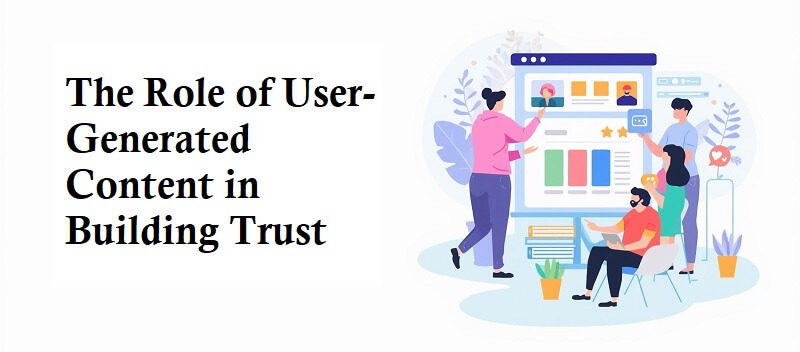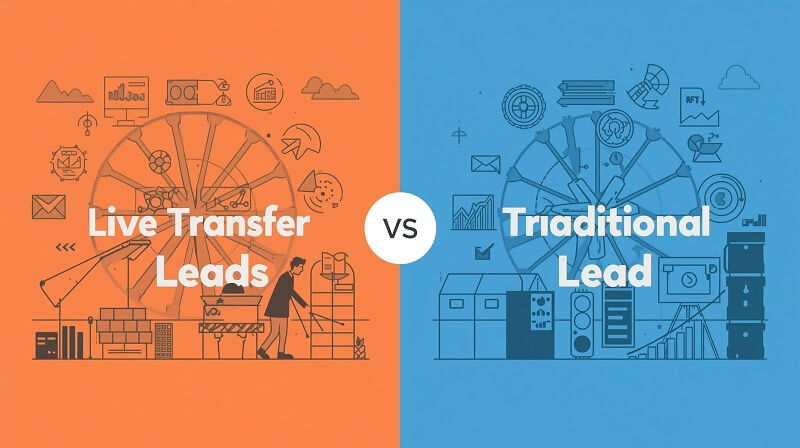
The Future of Email Marketing and The Rise of Artificial Intelligence and Machine Learning
in Digital Marketing on November 14, 2025Emails are a cost-effective and highly targeted marketing channel that can benefit a business in many ways. It’s a powerful marketing tool, allowing organizations to reach large audiences quickly and personalize their messages, especially with the growing influence of Artificial Intelligence and Machine Learning in Email Marketing to enhance precision and results.
Businesses can use email marketing to receive feedback, promote new products and services, and remain present in the target’s perception. This marketing channel is essential to online businesses whose sales entirely rely on their digital presence.
Email marketing is a great conversion funnel, too, as 50% of people buy from marketing emails at least once a month. New developments in computer science, namely artificial intelligence (AI) and machine learning (ML), are improving email marketing even further.
Microsoft defines AI as the ability “for a computer system to mimic human cognitive functions such as learning and problem-solving.” On the other hand, ML is “the process of using mathematical models of data to help a computer learn without direct instruction.”
ML is considered a subset of AI, as it can utilize complex AI algorithms, which you can use to optimize various email marketing campaigns and enhance their effectiveness.
Artificial Intelligence and Machine Learning in Email Marketing
Before AI and ML, email marketing faced challenges that limited marketers from fully utilizing the strategy. This section discusses those bottlenecks and how AI and ML can help remove them so businesses can improve their marketing efforts. Enrolling in an Artificial Intelligence Course can help you leverage AI and Machine Learning tools to enhance email marketing campaigns. These technologies enable target audience identification, automated email creation, and post-campaign data analysis with exceptional accuracy and speed, allowing businesses to optimize engagement and boost conversions effectively.
1. Audience Segmentation
More and more people prefer personalized experiences when transacting with businesses. In fact, 76% of customers get frustrated when not treated as individuals, so companies should segment their buyers into different groups and tailor their approaches for each group.
Businesses should adjust their emails based on demographics such as location, product/service purchased, and age. It includes language, tone, and etiquette. For example, different customer demographics respond differently to language, with older customers preferring formal writing and younger customers disliking the stiff, corporate language.
Manually analyzing and sorting customers based on their traits can take tremendous time and effort, which is where AI and ML come in. AI tools allow companies to segment customers quickly for email marketing, saving time and resources—an essential step in understanding how to boost your email marketing strategy effectively.
2. Email Testing
Learning what works in emails can take a lot of trial and error. Variations in sender names, subject lines, and content can dramatically increase the success of an email marketing campaign. This process, called A/B testing, is crucial for marketers to understand how to improve their emails.
For example, if a different subject resulted in 2% more conversions for a group in a test, a business may implement these changes in its next email campaigns for better results. This information can lead to many more clients for the company with only minor changes. However, analyzing this data and applying the changes in the different groups can be tedious—a challenge often highlighted by resources like Educationbeing com: Learn – Lead & Excel, which emphasizes the importance of data-driven optimization.
ML tools also help here, automatically updating everything from the content changes to the data analysis and reporting with no human intervention. Email tests show marketers what works for which demographics and ultimately improve profits.
3. Historical Analysis and Failsafe
AI and ML tools aren’t limited to analyzing new data—they can also provide insights from previous email campaigns. Old campaign data might contain patterns marketers previously missed, which can improve current methods.
These machines can also serve as a second opinion for marketers to consult when making decisions. Without AI and ML tools, people can misconstrue patterns and attribute positive changes to the wrong factors. This occurrence can confuse companies when the results of their A/B testing don’t reflect in practice.
By gathering insights from past campaigns and automating processes, these tools can help marketers save time, make informed decisions, and increase customer satisfaction. Marketers can also use a DMARC record generator to authenticate emails, improving deliverability and reducing the risk of spam.
4. Content Generation and Personalization
Crafting an original email with the right tone or message can be challenging, as the amount of available phrasing and word choice is limited. Creating new product pitches or feedback requests on your own can take a long time.
Even with a good concept, personalizing content to different audience segments can add extra effort to a marketer’s workload. AI tools can help here too.
Writers can speed up their creative process from the idea stage to writing and editing. Resources like OpenAI’s ChatGPT use machine learning to respond effectively and reasonably to specific queries. This technology enables writers to form fluently-spoken replies quickly and accurately.
Chatbots like this can even process requests like making passages more formal or casual to adjust to specific demographics.
AI writing is relatively new, so further developments can make creating and personalizing email content easier for marketers. This new technology can let businesses focus on improving other aspects of a B2B email marketing agency, like its reach or results reporting.
5. Lead Scoring and Churn Rate Reduction
Aside from audience segmentation, businesses can also assign a numerical score to prospective customers to indicate their purchase chances. This system makes it easier to prioritize, which leads you to focus on and allocate resources accordingly.
AI and ML algorithms can enhance lead scoring based on email engagement and other factors. For example, these systems can automatically consider customers’ demographic information, purchase history, and online behavior to score them as leads.
AI and ML allow this strategy to happen in real-time, bolstering other marketing efforts and letting companies send relevant and timely emails to interested parties.
Email marketing is a metric used to measure the number of individuals who unsubscribe from mailing lists during a certain period. It’s an indicator of attrition and helps organizations analyze customer loyalty.
Companies want to minimize churn rate because 65% of purchases come from returning customers. These techniques help businesses determine who will likely leave their mailing list and redouble their engagement attempts.
6. Post-Purchase Follow-Up and Feedback Analysis
Sellers live and die by the satisfaction of their customers. After a customer makes a purchase, businesses can use emails to thank them and request feedback, letting the customer know that the organization appreciates them and listens to their concerns.
Companies can use AI automation for post-purchase follow-up emails, reducing the effort required to boost customer satisfaction. They can also personalize these emails automatically, reflecting the customer’s purchase or location, further improving their experience.
Finally, AI and ML systems can sort through and present any feedback from these follow-up emails so the business can continue to improve its services. Making visible improvements based on public opinion can significantly enhance brand image and loyalty.
7. Results Reporting
Businesses have the chance to reach out to a large number of customers through an email marketing campaign; with potentially hundreds of thousands of emails being sent. Sorting through the mountain of resulting data is vital but can be inefficient if done manually. AI and ML tools can help analyze data, presenting insights and trends in an easy-to-understand format.
This ability can let businesses skip the tedium and go right to the parts that require human intervention; like responding to issues and concerns, preparing for the next email campaign, and improving their current strategies.
FAQ: AI & Machine Learning in Email Marketing
1. How does AI improve email marketing?
AI makes email marketing better by instantly analysing how customers act, dividing audiences into groups, and making content that is specific to each group. It helps firms communicate the appropriate message to the right people at the right time. AI also makes decisions more accurate, enhances conversions, and makes it easier to run big email campaigns by cutting down on the amount of work that needs to be done by hand.
2. What role does machine learning play in email personalisation?
Machine learning looks at client data, including their purchase history, browsing habits, engagement rates, and preferences, to make emails more personal. It finds patterns and makes guesses about what kinds of material each subscriber will like. This lets marketers design subject lines, offers, and messages that seem current and timely.
3. Can AI help reduce email unsubscribe rates?
Yes, AI helps lower the number of people who unsubscribe by looking at how users act and finding consumers who might be about to go. It can send re-engagement emails, suggest better times, and make the information more relevant. Businesses keep customers interested and lower churn by offering messages that are more meaningful and personal.
4. How does AI assist with A/B testing in email campaigns?
AI speeds up A/B testing by automatically checking the subject lines, content changes, and send times. It immediately finds the best-performing version and uses it throughout the campaign. Machine learning keeps learning from this data, which makes future testing better and helps marketers improve engagement without having to do any manual analysis.
5. Can AI generate email content automatically?
Yes, AI can write emails by employing natural language processing to make personalised messages, product suggestions, or follow-up emails. ChatGPT and other tools allow marketers to write faster, change the tone, and make alternative versions for different groups. This cuts down on writing time while maintaining the message professional, interesting, and consistent.
Unleashing The Power of AI and ML
Artificial intelligence and machine learning tools can improve any business’s email marketing campaign. They’re extremely helpful in accomplishing tasks like target audience identification, email creation, and post-campaign data analysis with great accuracy and speed.







